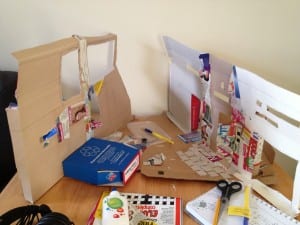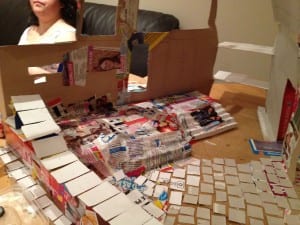25.2 – Experiment socially to see what causes reactions and grabs people attention.
Collect sources ready to experiment the stringing up outside ready for Monday 4th March.
Continue research on Café culture, narrowing it down to the café at the collection.
4.3 – Experiment with the ideas that we have for outside, if it is not possible to do this at the height that we wish to then do it at a lower levelso we can still experiment and plan.
Have a survey formed to hand out to member of the café to see the reasons behind why people visit the café.
11.3 – WORK IN PROGRESS WEEK! Need to have something that we want to try to see if it works ready to show the other groups so that they can give us feedback.
Also continue research to create a verbatim script as part of the performance in the café.
18.3 – Make sure all materials are gathered, script is close to being completed.
Have some idea of movement that is going to be done. Need to have a clear structure for the piece
Easter- Arrange a date to meet up during the 2nd week of the holiday.
Continue development and experimentation with materials.
8.4 – Attempt to have some sort of initial run through, see what problems arise. Then work out solutions of these problems.
15.4- Further discussion of the run through that we previously had. Make the piece strong and clear. Make it have a definite purpose of direction.
Things we need to consider:
Costumes
Music
Flowers
Materials
Risk assessment
What is happening in the upstairs window?
Making the café into an exhibition?
Is our script going to be completely verbatim?




